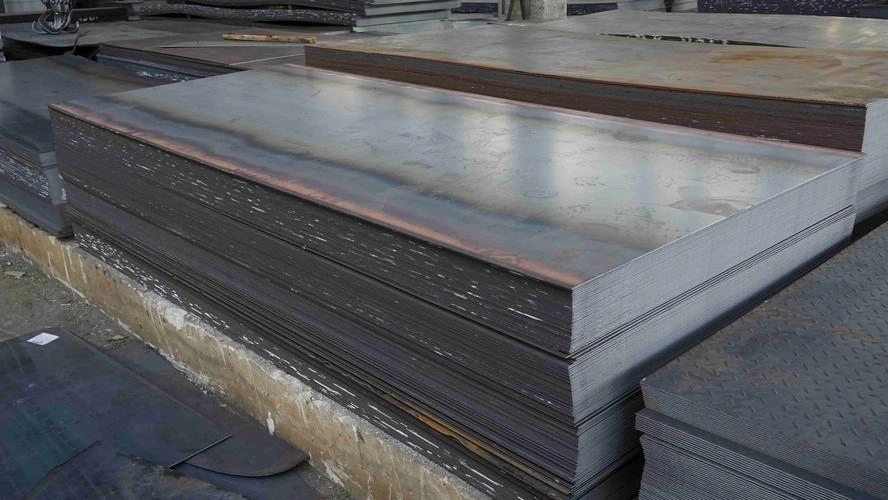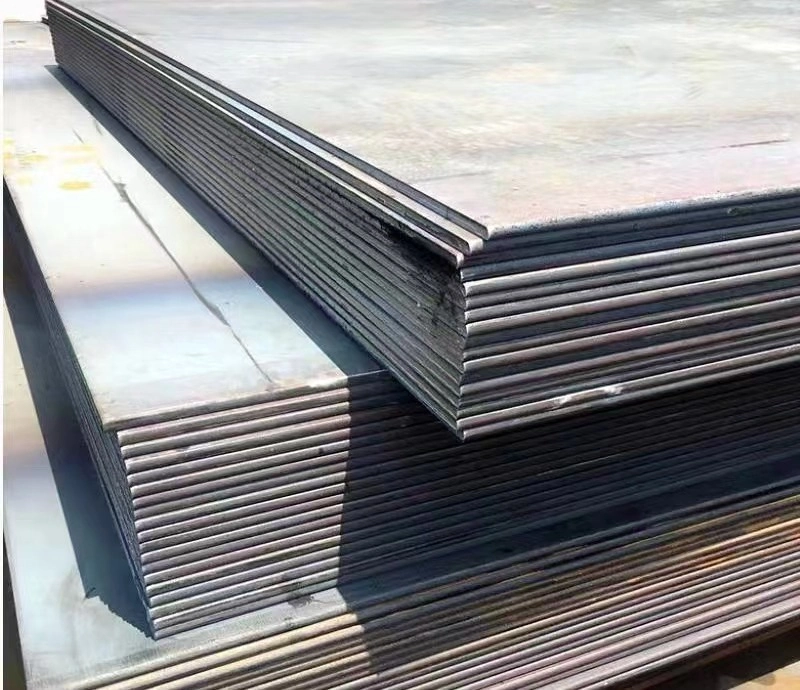
Understanding the Basics of Carbon Steel Plate
What’s a Carbon Steel Plate?
A carbon steel plate is a flat, tough metal sheet made mostly of iron and carbon, with a sprinkle of stuff like manganese or copper. It’s rolled out hot or cold, making it super versatile, strong, and wallet-friendly. Comes in tons of sizes—Carbon Steel Plate Thickness: 0.3-100mm Length: 1-12m or as per client’s actual request Width: 600-2500mm. Standard: AISI, ASTM, BS, DIN, GB, JIS. Surfaces? Think oiled, dry, pickled, or passivated. Making Process: Hot rolled, cold rolled.
Where These Plates Shine
Carbon steel plates are everywhere ‘cause they’re crazy tough. Think construction beams, ship hulls, pressure tanks, car parts, heavy machines, and bridges. Application: such as room beam, ship beam, industrial furnace, etc. They handle big stress and rough conditions like champs, perfect for heavy-duty builds.
What Makes them Tick
Here’s the deal on carbon steel plate traits:
- Tensile Strength: Doesn’t snap under pressure.
- Hardness: Fights scratches and dents.
- Ductility: Bends without breaking.
- Weldability: Joins easy with welding.
- Corrosion Resistance: Add treatments like oil or galvanizing for extra protection.
Before cutting, remove rust, oil, and other debris to keep cuts clean. Post-cut, clear off oxide scale or sulfur gunk. Make sure it meets “Construction Specifications” for quality.
Types of Carbon Steel Plates and Their Vibes
Low Carbon Steel Plate: The Flexible One
Low carbon plates got less than 0.3% carbon. Super bendy, easy to weld, but not the strongest. Great for shaping into beams or frames. Think Material: Q235, Q345, A36, S235JR, S355, S355JR. Perfect for chill structural gigs.
Medium Carbon Steel Plate: The Balanced Pick
With 0.3–0.6% carbon, these plates mix strength and flex. Awesome for machine parts like axles or crankshafts. Might need heat treatment to level up. Solid middle-ground choice.
High Carbon Steel Plate: The Tough Guy
Over 0.6% carbon? That’s high carbon steel. Crazy strong, super hard, but tougher to weld and less bendy. Ideal for stuff like mining gear or blades that need to take a beating.
Stuff to Think About When Picking a Carbon Steel Plate
Strength and Specs You Need
Know your project’s demands—how much weight or stress it’s gotta handle. Q345B rocks for strength without bulk. A36? Easy to shape and weld. Match the grade to your vibe, like Standard: EN10056, ASTM A36/A36M, EN10025, for the right power.
Size It Up Right
Your carbon steel plate needs to fit like a glove. Thickness runs 0.3–100mm, width 600–2500mm, length up to 12m—or custom if you ask. Get the exact dims for your build to avoid headaches.

Finish and Precision Matters
Surface finishes change the game:
- Oiled: Stops rust in storage.
- Galvanized: Fights corrosion big time.
- Pickled: Cleans off hot-roll gunk.
Surface Treatment: Oil/dry/passivation/pickling. Tolerances gotta hit industry standards for smooth follow-up work.
Standards and Certs for Carbon Steel Plates
Why ISO9001:2015 Is a Big Deal
ISO9001:2015 certification means the maker’s legit, following strict quality rules. Key for big projects like bridges or tanks. Sunrise New Material has passed ISO9001:2015 quality certification, so you know their carbon steel plates are top-notch.
Sticking to Global Rules
Standards like AISI, ASTM, BS, DIN, GB, JIS keep plates consistent worldwide. Think ASTM A36/A572 or EN10025. Makes it easy to use them in global supply chains or cross-country builds.
Matching the Perfect Carbon Steel Plate to Your Needs
Building Big: Structures, Bridges, Infrastructure
For beams, trusses, or bridges:
- Go low-to-medium carbon like S235JR or Q345B.
- Stick to EN10025 standards.
- Application: Widely used in building structure and engineering construction.
Pressure Vessels: Boilers, Tanks
Tanks and boilers need tough plates for wild temps:
- Pick ASTM A516/A537 grades.
- Focus on even thickness and weldability.
Wear-Resistant Gear: Mining, Heavy Machines
For rough stuff like mining:
- High-carbon plates for max hardness.
- Surface Treatment: Polished, bright, black for extra toughness.
- Grades like SS540 or S355J2 handle the grind.
Frequently Asked Questions (FAQs)
- What’s a carbon steel plate used for?
All over—construction beams, car parts, pressure tanks, mining gear. Cheap and strong! - How do I pick low, medium, or high carbon?
Low for shaping, medium for balance, high for tough, wear-heavy jobs. - Are all carbon steel plates weldable?
Low and medium weld easy; high-carbon needs preheating ‘cause it’s brittle. - What standards should I check?
Look for ASTM A36/A572 or EN10025 based on your project’s region. - Can I get custom sizes?
Yup! Suppliers like Sunrise New Material cut carbon steel plates to your specs, up to 12m long.
Wanna nail your project? Hit up Qingdao Sunrise New Material Co., Ltd. for dope carbon steel plates tailored to your vibe!






